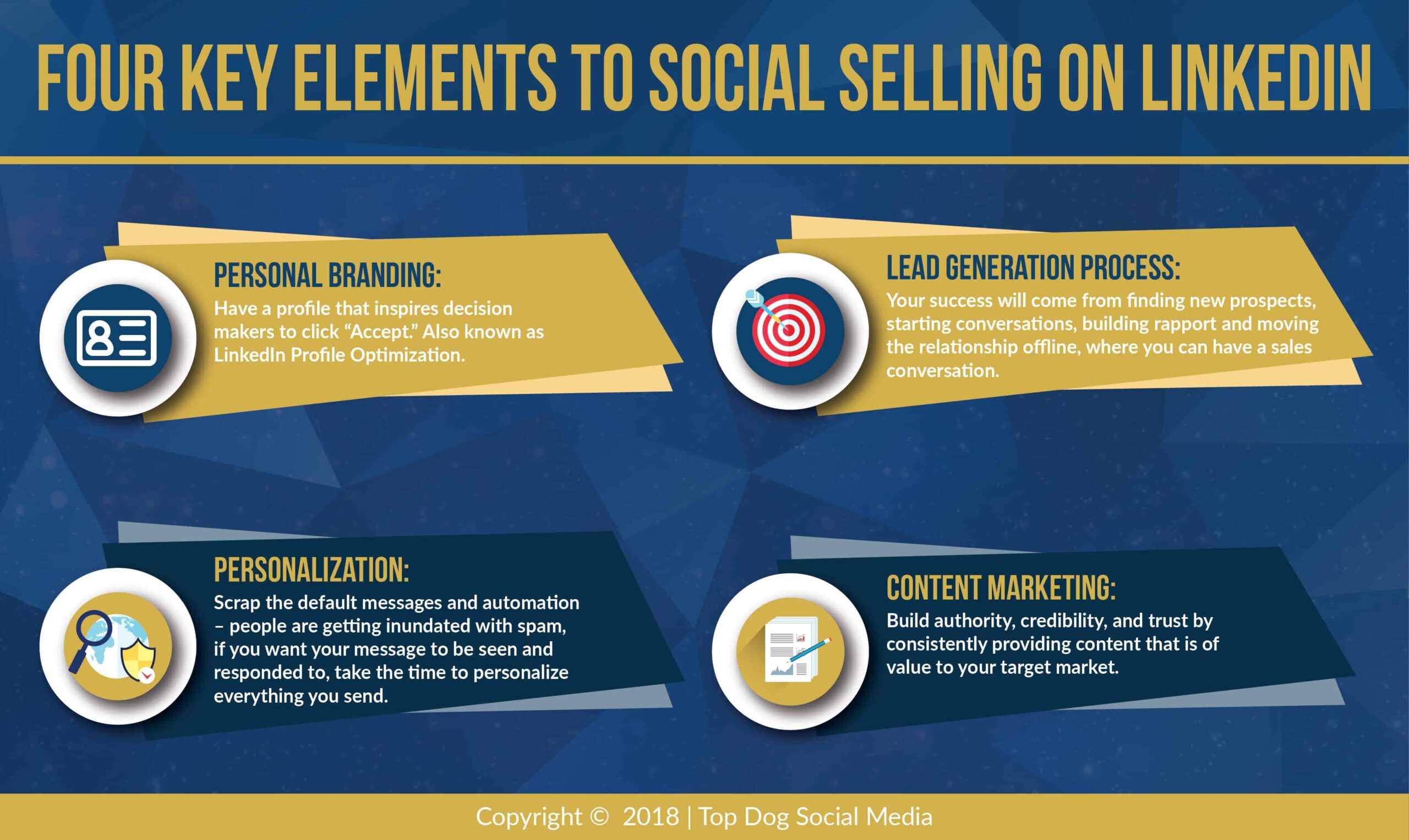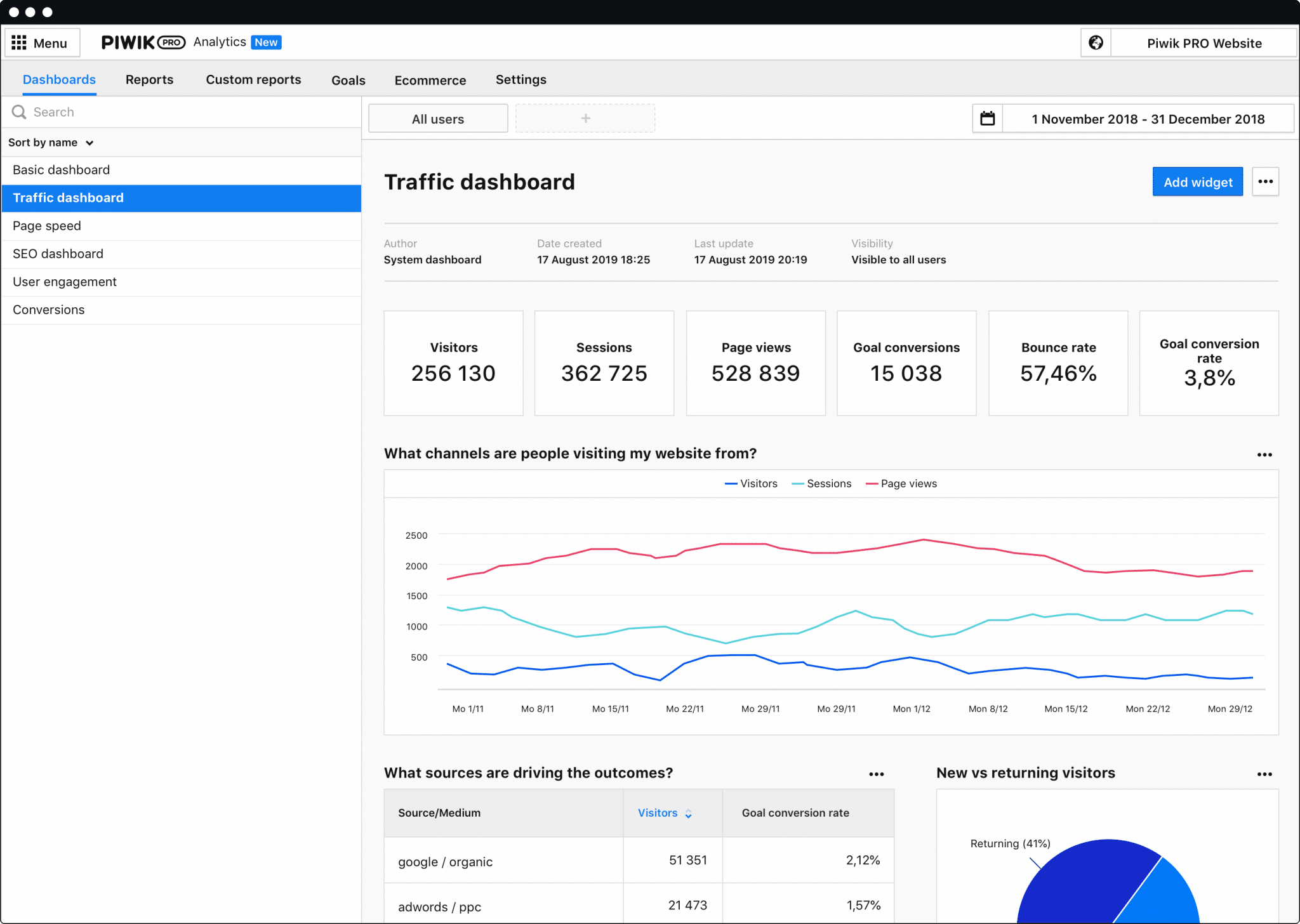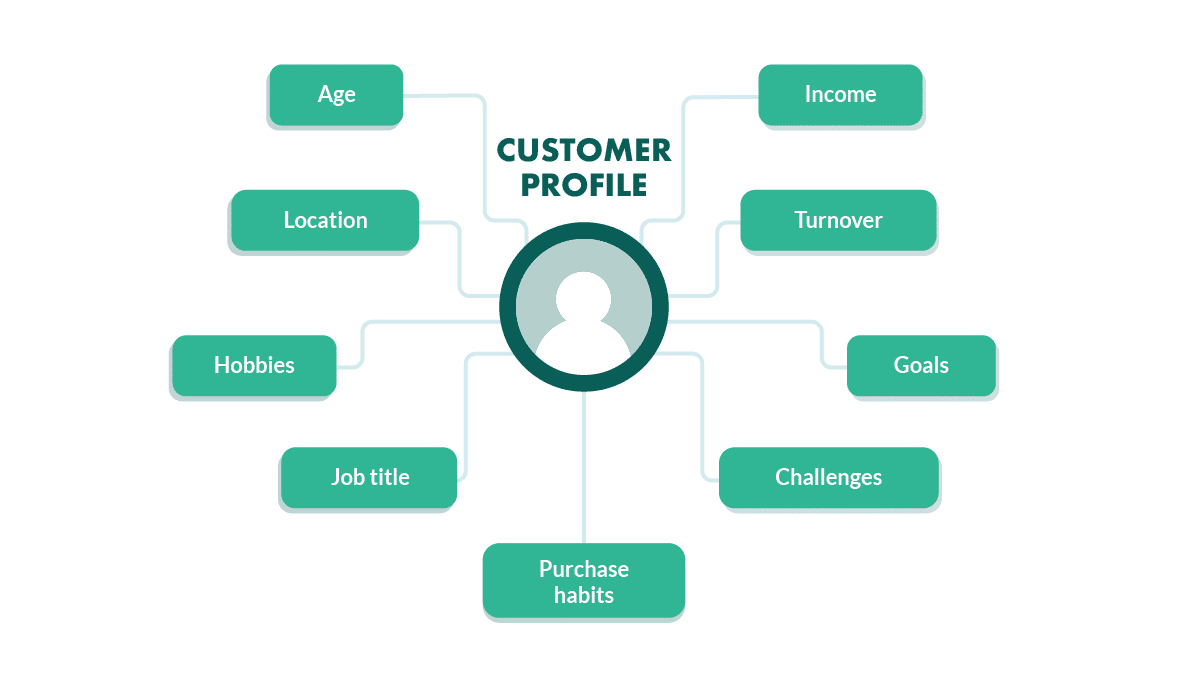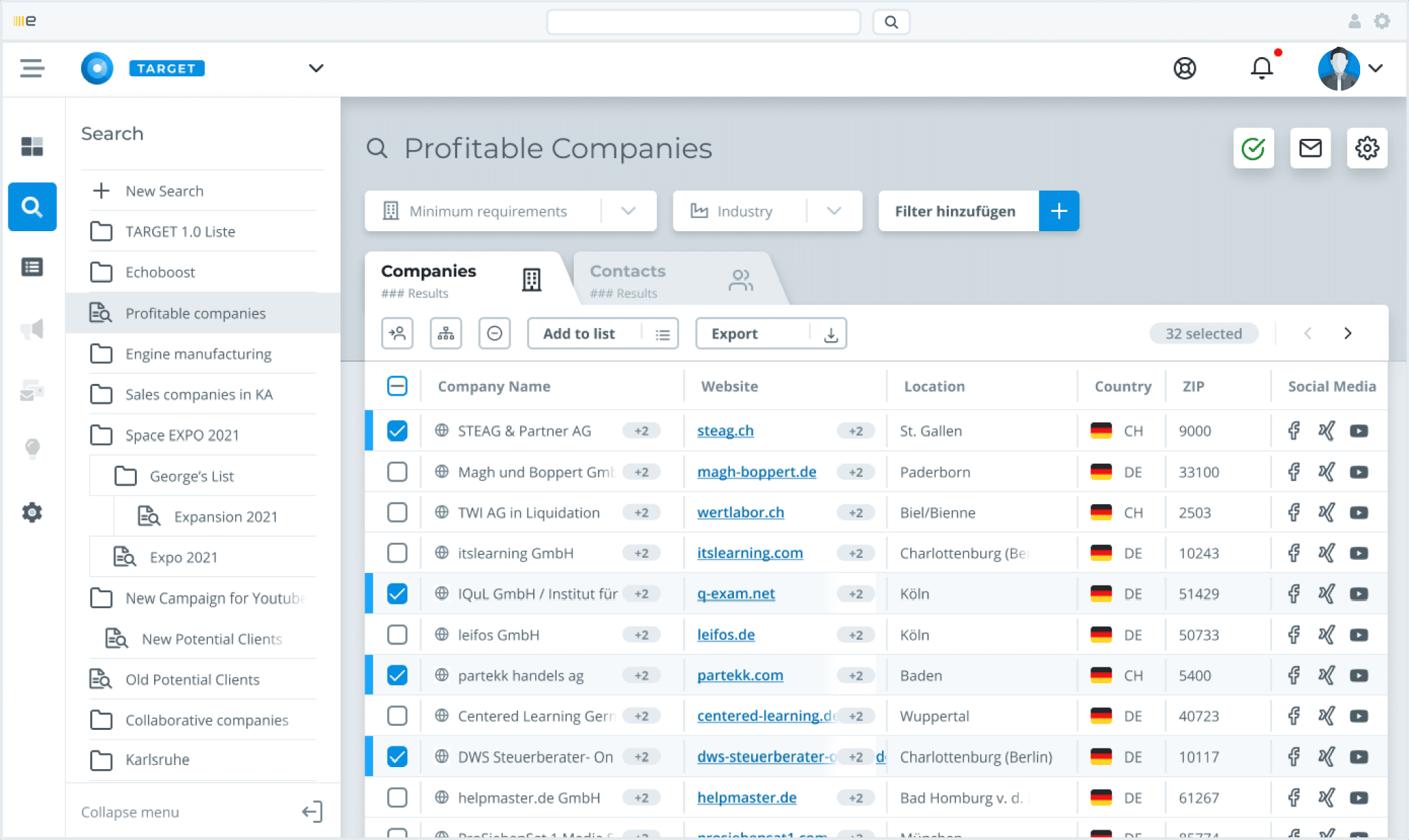Is your sales team doing a lot of cold calling, but rarely wins new customers? At the same time, your sales team spends a lot of time researching information on potential new customers? Or maybe your landing pages aren't converting and your ad campaigns aren't providing you with in the leads you were hoping for? In all cases, a thorough target market as well as a strong target customer analysis can be your key to success.
Doing a detailed B2B target customer analysis will not only benefit your lead generation, but also in the subsequent lead nurturing and scoring. In this article, we are going to talk about why a target customer analysis is so important and how sales intelligence tools based on new technologies, such as machine learning, can make your business life much easier for you!
What Exactly is a Target Customer Analysis in B2B?
A target customer analysis is all about identifying new customers in your target market that best fit your company's portfolio. Doing so, will boost sales most effectively. Target customers in B2B are therefore companies from your target market that you absolutely want to win for your company.
Since companies in the B2B sector often address a smaller target audience than in the B2C sector, you should make a particularly great effort to skillfully address your target audience. A careful B2B target customer analysis is the ideal way to do this—knowing your target market is the foundation for successful sales!
Advantages of Target Customer Analysis in B2B
A target customer analysis in B2B expands your horizons. You will come across many potential new customers that you did not have on your radar before.
- Your sales staff will contact only companies that perfectly match your ideal customer profile and which you will be able to support with your expertise.
- Every B2B target customer analysis includes a careful data collection. This means researching contacts along with all their contact information such as current phone numbers and email addresses. When the data collection is done, your sales force will be able to focus exclusively on selling your products—this saves you time and resources.
- If you research suitable sales triggers such as job postings, relocations and personnel changes during the target customer analysis, your sales staff will be able to convince new customers of your solution even better and faster.
- A target customer analysis also supports your marketing and pre-sales team. If you know who your target customers in your target market are and what their pains and needs are, your ads and content will also improve!
How to Identify Relevant Target Customers in B2B
In the first step of the B2B target customer analysis, you should clearly define who your target customers (and your target market!) are. To identify them, you need to think about the following questions:
- What industry do your target customers belong to?
- How many employees do your target customers have?
- How much revenue do your target customers generate?
- Where are your target customers located?
+ individual factors
In order to qualify only customers that perfectly fit your company, you should create a B2B lead list with the exact contact data of your target customers, which your sales department will contact in the next step. There are different approaches for this.
More Tips On How to Identify Your Target Market
1. Think About Former Customers and Prospects
First of all, it is of course worthwhile to put your former customers and prospects on your lead list. You have already cooperated successfully with your former customers, which you can even prove with references. Your former prospects are also likely to remember you, even though you did not have deal in the end. Keep a close eye on both groups. Maybe there has been a change in management and the willingness to invest has increased—there can always be a chance for a new cooperation.
2. Consider Your Blog Readers, Newsletter Subscribers and LinkedIn Network
Inbound measures such as SEO optimized blog posts, well thought-out newsletters and social selling on LinkedIn are indispensable in a target customer analysis. These measures all help to position you as an expert in your field, allowing you to build a personal brand for your company that will be seen by your target market and customers in B2B.
Analyze your newsletter subscribers closely, track the readers of your blog posts and build a network on LinkedIn that includes many people of your target market. This way, you will quickly be able to create a lead list of potential prospects in your target customer analysis, which you can contact in the further course of lead generation —for example by telephone.

Source: https://www.socialmediatoday.com
3. How to Research Target Customers with Tools and Directories
Of course, you don't have to do without useful (digital) tools that support you in creating your lead list during your target customer analysis in B2B. Website analysis tools and classic business directories are just as important as for instance the LinkedIn Sales Navigator.
Website Analysis Tools
People who browse your company's website often have a concrete interest in your services. But not all of them will contact you on their own. Keep track of them with a website analysis tool.
Such a tool provides you with valuable information on how visitors got to your website, which company they belong to and where they are located. You can also see which subpages of your website they are looking at and how much time they spend there browsing or reading.
With the help of a website analysis tool, you will be able to get an accurate picture of which of your products your B2B website visitors are interested in. This information can be very valuable for you in cold calling or during other acquisition methods.
Examples for helpful website analysis tools to analyze your visitors:
- LeadLab
- SalesViewer
- Google Analytics
- Piwik Pro

Source: www.piwik.pro
LinkedIn Sales Navigator
The LinkedIn Sales Navigator is another valuable tool for your B2B target customer analysis. You can use the Sales Navigator to search specifically for potential target customers in your target markets. The selection can be narrowed down based on factors such as industry affiliation, the position of the respective contact, location and much more.
The LinkedIn Sales Navigator informs you reliably and anonymously about new posts from people you have added to your lead list. By interacting with them below the posts and publishing content yourself, you will draw their attention to you and your company in the long term—without being intrusive.
Commercial Business Directories
Business databases, which you can easily purchase from various vendors, can also be a valuable resource for your B2B target customer and market analysis. They provide you with important information about your target customers, such as addresses, industry affiliation, annual sales and employee numbers. When it comes to deciding which target customers to include on your B2B lead list, such information is vital.
As soon as you use commercial company databases for your target customer analysis, however, you should bear in mind that in many cases they are static documents. If your contact in a company changes, for example, a static company directory will not notice. Apart from noticing company news, job postings and relocations, they also don't take into account all the data that can be found online about your target customers and markets.
Target Customer Analysis with Artificial Intelligence in B2B
Sales intelligence tools can be of great help to you in your B2B target customer analysis. On the one hand, they identify the sales triggers with which you will convince your target customers in cold calls. On the other hand, you can use a list of previously defined B2B customers to easily find many more potential new customers which will significantly boost your B2B target customer analysis with just a few clicks.
Easily Identify Valuable Sales Triggers with Sales Intelligence
The intelligent algorithms of a sales intelligence tool continuously search the web for information on companies that are relevant for your target customer analysis and new customer acquisition in B2B. This includes newly filled positions as well as company news, relocations and changed product ranges.
Sales intelligence tools thus keep the information on your target customers continuously up-to-date. In this way, such tools always provide you with valuable conversation starters—also known as sales triggers—for the acquisition of new customers by telephone or elsewhere. If you use them skillfully, you will signal to your target customers that you have already dealt with their company and thus convince them more quickly of your products and services.

Source: www.superoffice.com
Sales Intelligence: Expanding Your B2B Lead List at the Touch of a Button
But: The potential of sales intelligence technologies for your lead generation is far from exhausted! Tools based on artificial intelligence can further use your lead list to generate numerous other companies that are similar to your ideal customers. By identifying these so-called B2B lookalikes for you, sales intelligence technologies take your B2B target customer analysis to another level in seconds. All you need is a B2B lead list, which—as described above—you can compile from your current and former customers and prospects, for example.
Your sales intelligence tool often recognizes the SIC codes of your target customers and uses them for your further target customer analysis by identifying other companies in the same industry. To find out which of them are most promising for you as a customer, a sales intelligence tool further narrows down the companies in question. Using data such as company news and job descriptions, sales intelligence tools determine which companies might have a need for your services. Furthermore, they provide you with the contact details of the right contacts in a target company!
Tools for Your Target Customer and Market Analysis in B2B
For sales, there are now numerous sales intelligence tools with which you can optimize the processes of your target customer analysis. Tools such as the cloud software for sales and marketing intelligence Dealfront, the data fist sales platform Apollo as well as the Sales Acceleration Platform and the B2B contact database Adapt are particularly suitable for your B2B target customer analysis.
Dealfront
With a detailed database of over 26 million companies and 89 million current contacts in B2B, the cloud software Dealfront will significantly support your B2B target customer and market analysis. Using machine learning, the software determines which companies might need your solutions in seconds. The software keeps company data, the data of potential contacts and trigger events that your sales department can use as sales triggers up-to-date for you.
B2B Lead Nurturing: The Next Step After Your Target Customer Analysis
Your target customer and market analysis has reached its goal: You acquired numerous new prospects for your company during your prospecting and lead generation phases. Now it's time to qualify these prospects within the B2B sales funnel and turn them into new interested companies!
The B2B sales agency „alivello“, which uses the cloud software Dealfront for lead prospecting and lead generation, is the best example of how you can succeed using this method. The employees of „alivello“ further qualify the prospects of their customers with a combined strategy of lead generation by phone as well as digital sales.
With cold calls, the agency's sales professionals reach out to the contact persons, whom they have previously identified in the target customer analysis. Now, they try to point out why their products help the respective company in a personal conversation. With the help of the sales triggers provided by Dealfront, „alivello“ develops a sales story for each of its conversation partners that is precisely tailored to their interests and challenges. The sales agency manages the prospect data centrally via their Salesforce CRM system in use.
Parallel to lead generation by telephone—for example, in the time between two telephone calls—the sales agency uses digital sales to further qualify its customers' prospects. In the course of lead nurturing, the prospects migrate to the Evalanche marketing automation system via an interface. From now on, they will receive email newsletters tailored precisely to their interests—which, over time, will convince them more and more of the solutions presented.
The agency's staff also use sales intelligence to determine when the right time is to return the prospects to the sales department. Marini Systems' Customer Data Platform (CPD) uses intelligent algorithms to analyze the behavior of prospects within the B2B sales funnel. In this way, the tool determines when the right time to pass prospects back from Marketing Automation to the CRM system and thus to Sales.
Conclusion: What Makes a Good B2B Target Customer Analysis?
A target customer and market analysis pays off in B2B—not only at the beginning, but during all phases of new customer acquisition; from prospecting to lead generation to lead nurturing.
At the same time, a target customer analysis is a complex process that requires a lot of time and resources if you don’t use the right digital tools. However, sales intelligence tools now offer companies the opportunity to effectively reduce such research efforts.
Since such tools are based on artificial intelligence, they carry out B2B target customer analyses within seconds using a previously uploaded or created lead list. At the same time, they continuously determine relevant sales triggers, which the sales department can use to find out the best time to contact a prospect.
For the acquisition of new customers—and thus for the success of the business as a whole—a B2B target customer analysis is therefore a decisive step that companies should not never underestimate!

